Reflections on 100 Years of Women’s Suffrage
Research & Inquiry

Published September 17, 2020
Reflections on a century of progress and reform, but also betrayals and roadblocks.
How did women’s activism change after suffrage was achieved?
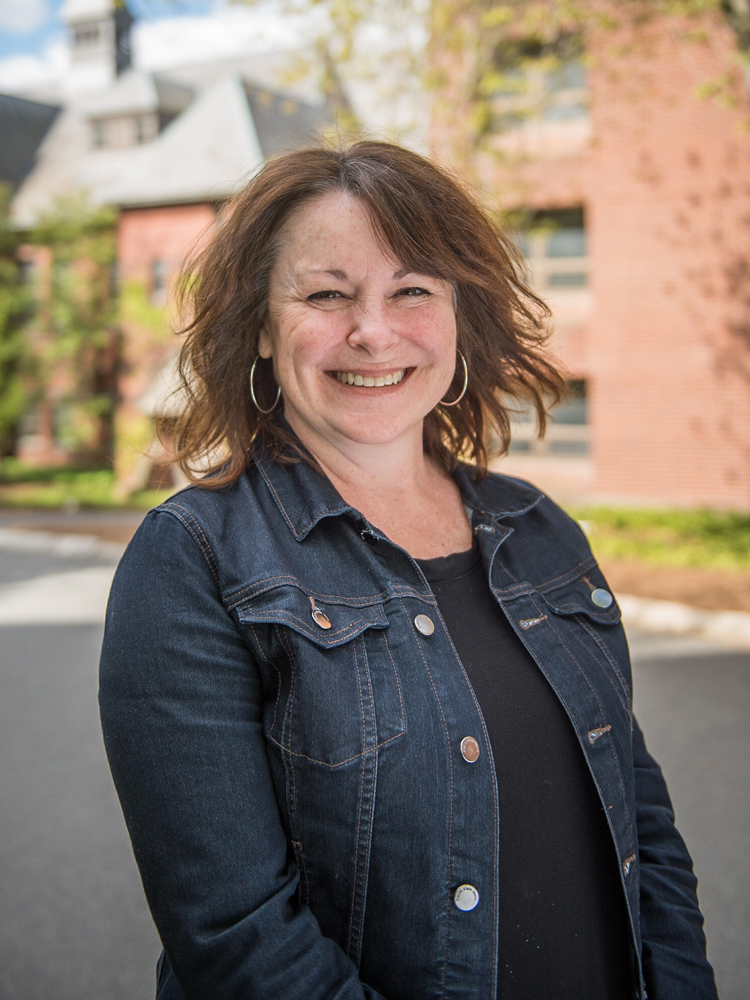 By Kelly Anderson. An impressive but unstable coalition came together to ensure the passage of women’s suffrage in 1920. The movement was long—over 70 years—and the relationships were fragile. The suffrage movement was made up of labor leaders and recent immigrants, the Black women’s club movement, radicals and anarchists, white middle-class reformers, young college women, racial progressives and white supremacists. It was a house divided, and as such, it shouldn’t have been a surprise that this historic but tenuous coalition reached its breaking point after the 19th Amendment was ratified.
By Kelly Anderson. An impressive but unstable coalition came together to ensure the passage of women’s suffrage in 1920. The movement was long—over 70 years—and the relationships were fragile. The suffrage movement was made up of labor leaders and recent immigrants, the Black women’s club movement, radicals and anarchists, white middle-class reformers, young college women, racial progressives and white supremacists. It was a house divided, and as such, it shouldn’t have been a surprise that this historic but tenuous coalition reached its breaking point after the 19th Amendment was ratified.
Rather than fading away, as is so often thought, activists and reformers channeled their energies into different, sometimes competing, issues. Some remained committed to women’s rights, racial equality and labor reform. But other former advocates of votes for women put their energies into nativist and racist movements intended to ferret out radicalism and ensure the maintenance of white privilege. In other words, the post-suffrage era was not a moment of complacency or apathy among American women. Quite the opposite. Political tensions, primarily over issues of race and class, continued with renewed vigor; they would chart the conflicts, and betrayals, that hindered women’s activism for the next 100 years.
Kelly Anderson is a lecturer in the study of women and gender at Smith and director of the archives concentration.
Young people tend to vote in lower numbers than other age groups. What will inspire young women, in particular, to register and make their voices heard at the ballot box?
 By Rohanna (Ro) Antoine ’21 Voting is a social construct. Not necessarily the act of voting, but the social constructions of age and gender influence voter turnout. The social construction of age suggests that elders are wiser because they have more experiences. Therefore, young people may not choose to vote because they may feel that older people are meant to make decisions and could make better decisions due to longer lived experiences. Also, there are plenty of older people in politics, which can make it disheartening for young people.
By Rohanna (Ro) Antoine ’21 Voting is a social construct. Not necessarily the act of voting, but the social constructions of age and gender influence voter turnout. The social construction of age suggests that elders are wiser because they have more experiences. Therefore, young people may not choose to vote because they may feel that older people are meant to make decisions and could make better decisions due to longer lived experiences. Also, there are plenty of older people in politics, which can make it disheartening for young people.
The social construction of gender was showcased explicitly through the women’s suffrage movement; implicitly, women were not seen as capable of participating in politics. Sexism, which includes the idea that the man is supposed to make the decisions, is still apparent in society.
Education is an essential part of the formula to dismantle social constructs. Therefore, schools need to do more to promote awareness of voting. Genuinely, some people do not know where to begin with voting; schools often do not teach about its importance and how to do it. If we can have more schools give clear instructions and information, we could have higher voter turnout. Overall, there is a prominent need for history that reflects all identities in the United States through books, stories and textbooks, but adding voting and its importance should be on the list.
American women have had the vote for 100 years. Thinking of women around the world, what’s the significance—for themselves and for their communities— of women having the vote?
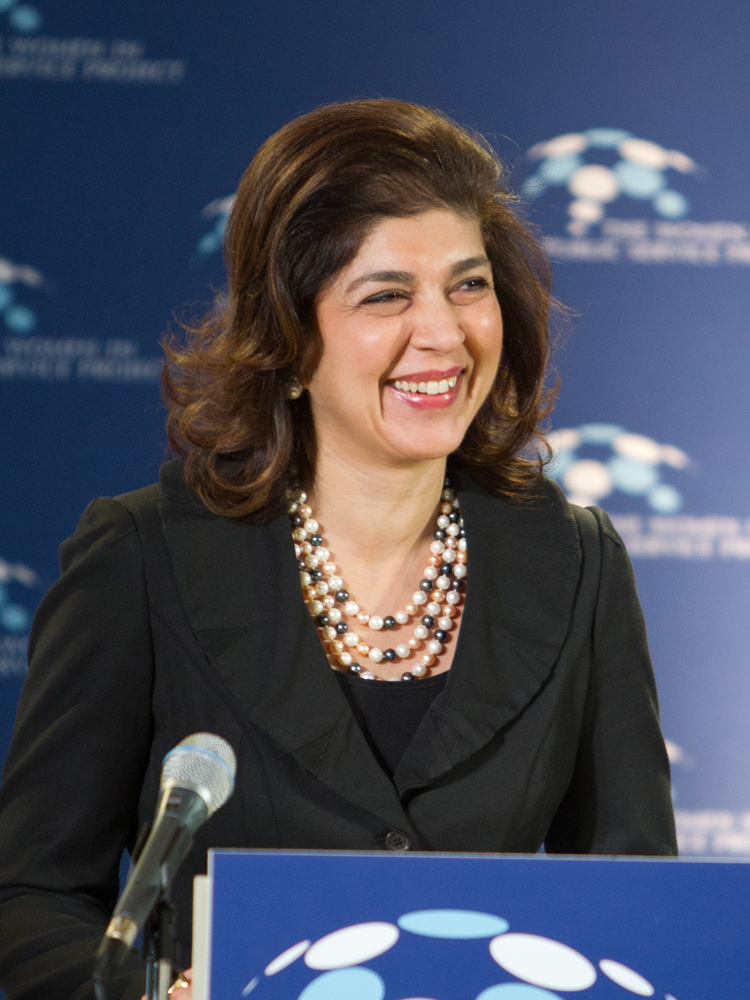 By Farah Pandith ’90 The desire to have the opportunity to make a difference to your community—and the shared global community—through your ideas and actions is a sentiment articulated in every hemisphere to which I have traveled. Knowing that you matter and that you are counted was always essential, but now, because our global communities are experiencing simultaneous crises, the actions of every single person have increased meaning. Threatened by COVID-19, nations are seeking new collaborations, understanding and insights. Importantly, our citizens and leaders recognize and benefit from the strength of robust, whole and dynamic communities. The crisis has exposed the power of connected humanity and the weakness of limiting insights, innovation and participation. In order to thrive, to solve human problems and global and national challenges and to rise to our combined human potential, our international society must be at its best. What does it mean to be a whole, productive community in the 21st century? It means women must be a full and equal part of all communities. When limits are put on females, the disruption and negative ripple effects on local and global communities are severe.
By Farah Pandith ’90 The desire to have the opportunity to make a difference to your community—and the shared global community—through your ideas and actions is a sentiment articulated in every hemisphere to which I have traveled. Knowing that you matter and that you are counted was always essential, but now, because our global communities are experiencing simultaneous crises, the actions of every single person have increased meaning. Threatened by COVID-19, nations are seeking new collaborations, understanding and insights. Importantly, our citizens and leaders recognize and benefit from the strength of robust, whole and dynamic communities. The crisis has exposed the power of connected humanity and the weakness of limiting insights, innovation and participation. In order to thrive, to solve human problems and global and national challenges and to rise to our combined human potential, our international society must be at its best. What does it mean to be a whole, productive community in the 21st century? It means women must be a full and equal part of all communities. When limits are put on females, the disruption and negative ripple effects on local and global communities are severe.
During my time in government as a U.S. diplomat, I had the honor of traveling to nearly 100 nations and talking with women of all ages and from a wide variety of cultures, heritages, religions and ethnicities. Whether in New Zealand (the first nation to allow women to vote in 1893) or Saudi Arabia (where women began voting in 2015), the ability to shape policy through their ballot choices was a key to the way these women thought about their own value, and critically, it made a difference in how they viewed the world. Rather than be kept at a distance, women wanted to be involved, with dynamism and action. I was often asked: If women were not executing their own power, how could others see them as powerful? Even in more traditional communities, I saw the impact of women voting. New priorities were put on the policy table, new candidates were emboldened to run for office, and vitally—so vitally—men looked at the women differently.
In the complex world we are navigating today, we see young girls eager to be leaders and active agents of change in science, politics, education and more. This did not happen just because. It happened because they saw their mothers, grandmothers and peers taking part in the world. And despite the United States’ slow progress (we have yet to elect a female president, for example), American activism has helped fuel ideas globally and has increased interest in the power to vote and take action. Voting is an essential right of any community, and women around the world today have gained power in their collective strength. This participation is a flame that is igniting much more. We need global citizens to be as strong as ever. The challenges we face (like climate change, global health, poverty and terrorism) require all of us to be engaged. It starts with a ballot.
Farah Pandith ’90, Smith medalist and author of How We Win: How Cutting- Edge Entrepreneurs, Political Visionaries, Enlightened Business Leaders, and Social Media Mavens Can Defeat the Extremist Threat, served in the George H.W. Bush, George W. Bush and Barack Obama administrations. She is affiliated with the Belfer Center for Science and International Affairs at Harvard University’s Kennedy School of Government and the Council on Foreign Relations.
How does your organization inspire young people to vote?
 By Lore Hilburg ’73I have been registering young voters at community and state colleges since 2017 as well as a diverse but mostly poor population at various courthouses. We learned a technique that requires we carry the registration form on a clipboard and approach with the statement: “Help me save the world from Trump.” It gets the young to take the earbuds out and pay attention. If their answer to the immediate request that they register and vote is negative, I ask what their major is or what they are studying. If it is related to the arts or science, I explain how this administration has cut funding for both, which will affect their ability to work. I also explain that we have had very close elections and that every vote matters. We have other arguments, such as how the youth vote (now 69 million strong) will be the strongest, given that my baby boomer generation is down to 67 million. So they can get free college the way we used to, end student debt and have breathable air and potable water. But the persuasion must be personal for the person you are addressing. It worked in the midterm election to flip seven congressional districts from red to blue. The percentage of young voters was significantly higher than in the prior midterm in 2014. It will work again in November.
By Lore Hilburg ’73I have been registering young voters at community and state colleges since 2017 as well as a diverse but mostly poor population at various courthouses. We learned a technique that requires we carry the registration form on a clipboard and approach with the statement: “Help me save the world from Trump.” It gets the young to take the earbuds out and pay attention. If their answer to the immediate request that they register and vote is negative, I ask what their major is or what they are studying. If it is related to the arts or science, I explain how this administration has cut funding for both, which will affect their ability to work. I also explain that we have had very close elections and that every vote matters. We have other arguments, such as how the youth vote (now 69 million strong) will be the strongest, given that my baby boomer generation is down to 67 million. So they can get free college the way we used to, end student debt and have breathable air and potable water. But the persuasion must be personal for the person you are addressing. It worked in the midterm election to flip seven congressional districts from red to blue. The percentage of young voters was significantly higher than in the prior midterm in 2014. It will work again in November.
Lore Hilburg ’73 of Los Angeles is a founding member of Field Team 6, a nonprofit dedicated to registering and getting out the vote for Democrats in swing districts across the country.
What do you say to a woman who tells you her vote doesn’t matter or she doesn’t plan to vote?
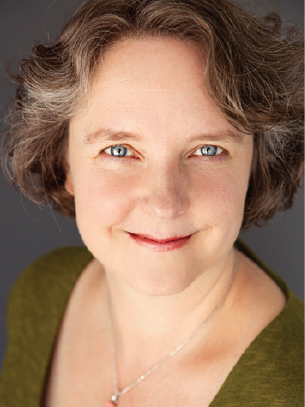 By Satya Rhodes-Conway ’94 Look around. Everything that’s happening—pandemic, climate change, worsening inequality, war—is impacted, for better or worse, by someone in elected office. The house and neighborhood you live in are shaped by zoning and building codes. The streets you walk, bike and drive on are maintained by public works departments. Do you have public transit? That’s because an elected official prioritized it. Your workplace is governed by employment law, which is voted on by elected officials. Do you have kids? Their schools are run by elected school boards. Parks. Air quality. Libraries. Trash pickup. Water quality. Public health. Fire departments. Traffic control. Affordable housing. All these things are governed by—and funded (or not) by—elected officials. Who chooses the elected officials? YOU DO. With your vote. Choosing not to vote is like saying none of this matters, that you don’t care what happens. And I know that’s not true. Choose to vote. And please, choose wisely.
By Satya Rhodes-Conway ’94 Look around. Everything that’s happening—pandemic, climate change, worsening inequality, war—is impacted, for better or worse, by someone in elected office. The house and neighborhood you live in are shaped by zoning and building codes. The streets you walk, bike and drive on are maintained by public works departments. Do you have public transit? That’s because an elected official prioritized it. Your workplace is governed by employment law, which is voted on by elected officials. Do you have kids? Their schools are run by elected school boards. Parks. Air quality. Libraries. Trash pickup. Water quality. Public health. Fire departments. Traffic control. Affordable housing. All these things are governed by—and funded (or not) by—elected officials. Who chooses the elected officials? YOU DO. With your vote. Choosing not to vote is like saying none of this matters, that you don’t care what happens. And I know that’s not true. Choose to vote. And please, choose wisely.
Satya Rhodes-Conway ’94 is the mayor of Madison, Wisconsin.
After 100 years of women’s suffrage and with a 51 percent majority, women have not reached the presidency. What will it take for that to happen?
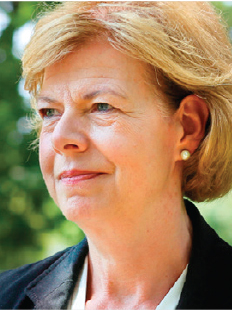 By Tammy Baldwin ’84 Right now in America, we are well short of equal representation for women. Government works best when our federal, state and local legislatures reflect the people we work for—when they look like America. That’s why we need more women in public office.
By Tammy Baldwin ’84 Right now in America, we are well short of equal representation for women. Government works best when our federal, state and local legislatures reflect the people we work for—when they look like America. That’s why we need more women in public office.
Women bring their life experience to the job, and that helps inform the debates, votes and policies we deliver. I believe that the women I’ve worked with during my time in government all ran for office to solve problems. We are guided by the idea that our job is to work together, across the party aisle, to get things done.
We still have more work to do, more glass ceilings to break, and that’s why I encourage women of all ages and backgrounds to stand up and speak out on the issues that matter most to you, so our voices are heard. We must continue to empower women to lead and to run for office so that we can finally achieve equal representation in our government—including, one day, a woman president.
U.S. Senator Tammy Baldwin ’84 of Wisconsin is a Smith medalist.
What has the vote meant for American working-class women?
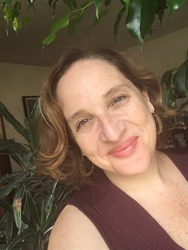 By Jennifer Guglielmo Many working-class women in the United States organized for the vote to increase their political power; they saw the vote as an important tactic in the fight for livable wages, safe working conditions, shorter hours, an end to workplace harassment and discrimination, and greater power in labor unions. Many joined the suffrage movement as a result of the activism in mass labor organizing. In the process, they revitalized the movement and generated powerful momentum to win the vote in 1920. Organizers used a range of successful tactics from the labor movement, such as street rallies, protest marches and other forms of civil disobedience that were confrontational and provocative.
By Jennifer Guglielmo Many working-class women in the United States organized for the vote to increase their political power; they saw the vote as an important tactic in the fight for livable wages, safe working conditions, shorter hours, an end to workplace harassment and discrimination, and greater power in labor unions. Many joined the suffrage movement as a result of the activism in mass labor organizing. In the process, they revitalized the movement and generated powerful momentum to win the vote in 1920. Organizers used a range of successful tactics from the labor movement, such as street rallies, protest marches and other forms of civil disobedience that were confrontational and provocative.
Tensions over racism and classism created divisions. Working-class women saw the vote as an important tool, but they also understood its limitations. The vote also empowered those white women who would use suffrage to strengthen capitalism, white supremacy, and colonial and imperial expansion. In the 1920s, millions of white women expressed their new political power by mobilizing in the reinvigorated Ku Klux Klan, one of the largest social movements of that decade. Armed with the vote, many white women worked to exclude working-class immigrant women and all women of color from citizenship rights, including voting.
In practice, the vote continued to exclude women of color. Racist literacy and poll tax requirements, as well as outright violence and intimidation at the polls, prohibited African American women from voting. Most would not be enfranchised until the massive civil rights voter registration drives, culminating in the passage of the 1965 Voting Rights Act. Mexican, Puerto Rican, Asian and Native women faced similar prohibitions, including language discrimination, on their voting rights.
Jennifer Guglielmo, associate professor of history at Smith, specializes in the histories of labor, race, women and social movements.
These essays appear in the Fall 2020 issue of the Smith Alumnae Quarterly.

100 Years of Suffrage: A century after the ratification of the 19th Amendment, the struggle for equal representation continues.
Because They Persisted: Long struggle for women’s suffrage documented in interactive web app.
‘She Was My North Star’: Great-granddaughter celebrates a pioneering champion for the rights of women and children.
Girl Power: For decades, Camp Marbury, founded by a Smith music professor and his suffragist wife, was a haven for budding feminists.
Illustration by Hanna Barczyk